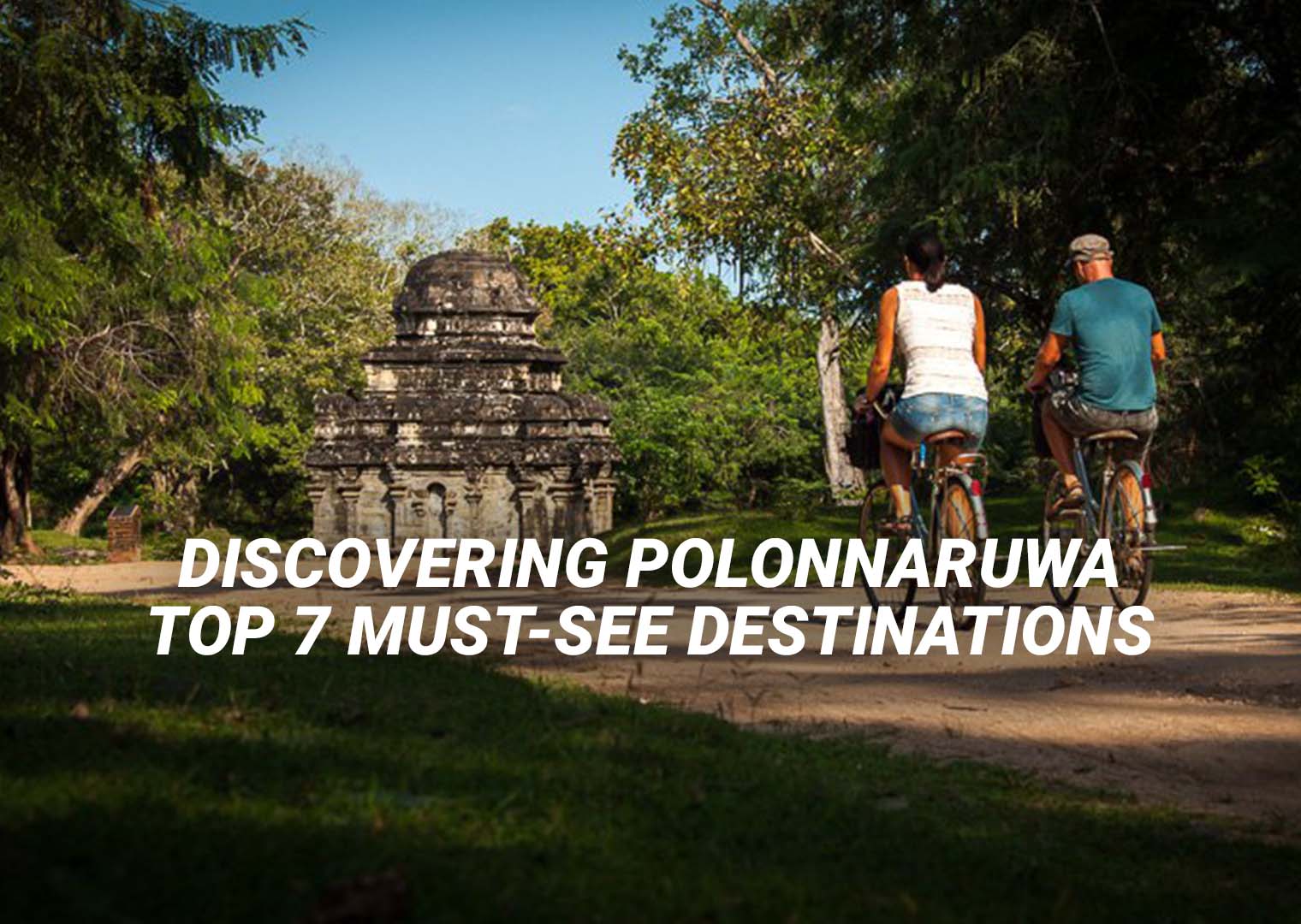Polonnaruwa, the ancient city that stood as Sri Lanka’s regal capital over a thousand years ago, is a testament to the island’s rich tapestry of history. Today, it serves as one of the most significant archeological sites in the country, drawing thousands of travelers, history buffs, and archeology enthusiasts to its vast, verdant landscapes dotted with age-old ruins and majestic structures. Dive deep into the past as we journey through the top 7 destinations in this UNESCO World Heritage site.
The Royal Palace Complex ( Parakramabahu’s Palace )
Once the heart of Polonnaruwa’s royal grandeur, the Royal Palace Complex stands as a reflection of the might and vision of King Parakramabahu the Great. At its zenith, the seven-story palace boasted around 1,000 rooms. Though time and the elements have reduced the palace to its ruins, the three-story remnants still inspire awe. The audience hall, with its intricately carved stone pillars and lion portals, paints a vivid picture of the regal audiences once held here.
Quadrangle (Dalada Maluwa)
The Quadrangle, a raised plateau in the heart of the ancient city, is an archeological marvel with its condensed collection of ruins. The Vatadage, a circular relic house, is the crown jewel of the Quadrangle. With its stunning stonework and stupas, it provides a glimpse into the architectural prowess of ancient Sri Lankan artisans. Surrounding the Vatadage are various shrines, Buddha statues, and other historically significant structures, each with its own tale to tell.
Gal Vihara
A short drive from the Quadrangle leads you to the Gal Vihara, a set of four colossal Buddha statues carved out of a single granite wall. The statues, depicting Buddha in different postures, showcase the finesse and spiritual dedication of Polonnaruwa’s sculptors. The reclining Buddha, measuring over 14 meters, is particularly noteworthy for its sheer size and intricate detailing.
Polonnaruwa Vatadage
A masterpiece of ancient Sinhalese architecture, the Polonnaruwa Vatadage once sheltered the sacred tooth relic of Buddha. Circular in shape with a stupa at its center, this relic house is flanked by stone columns, beautifully adorned guardstones, and moonstones – each telling tales of Buddhist teachings and lore.
Rankoth Vehera
This enormous stupa, standing at 54 meters, is the largest in Polonnaruwa and the fourth largest in Sri Lanka. Resembling the famous Ruwanwelisaya in Anuradhapura in its architectural style, Rankoth Vehera is a testament to the city’s religious fervor. The stupa’s serene ambiance, punctuated by the chirping of birds and the gentle rustle of leaves, offers a tranquil retreat.
Lankatilaka Gedige
Tucked away amidst the lush greenery, the Lankatilaka Gedige is a unique blend of Sinhalese and South Indian architectural styles. Once a temple for Lord Buddha, it houses a colossal headless Buddha statue. The towering brick walls, still standing tall after centuries, are adorned with carvings that offer a glimpse into the religious and cultural amalgamation of the era.
Kiri Vehera
Another iconic stupa in Polonnaruwa, the Kiri Vehera is said to have been built by King Parakramabahu the Great in honor of his Queen Subadra. Though smaller than the Rankoth Vehera, the Kiri Vehera impresses with its immaculate condition, white-washed facade, and the aura of tranquility it exudes.
Polonnaruwa’s historical treasures weave a tale of grandeur, spirituality, and cultural amalgamation. While these seven destinations offer a peek into its illustrious past, the city has countless other ruins, each with its own story, waiting to be explored. As you walk amidst the ruins, you’re not just sightseeing; you’re time-traveling, retracing the steps of kings, queens, monks, and commoners from a millennium ago.
With its profound historical significance and ethereal beauty, Polonnaruwa is not just a destination; it’s an experience. So, pack your bags, lace up your walking shoes, and immerse yourself in the time-honored tales of this ancient city. From the grandeur of its royal palaces to the serenity of its stupas and the artistry of its sculptures, Polonnaruwa promises a journey that you’ll cherish for a lifetime.

